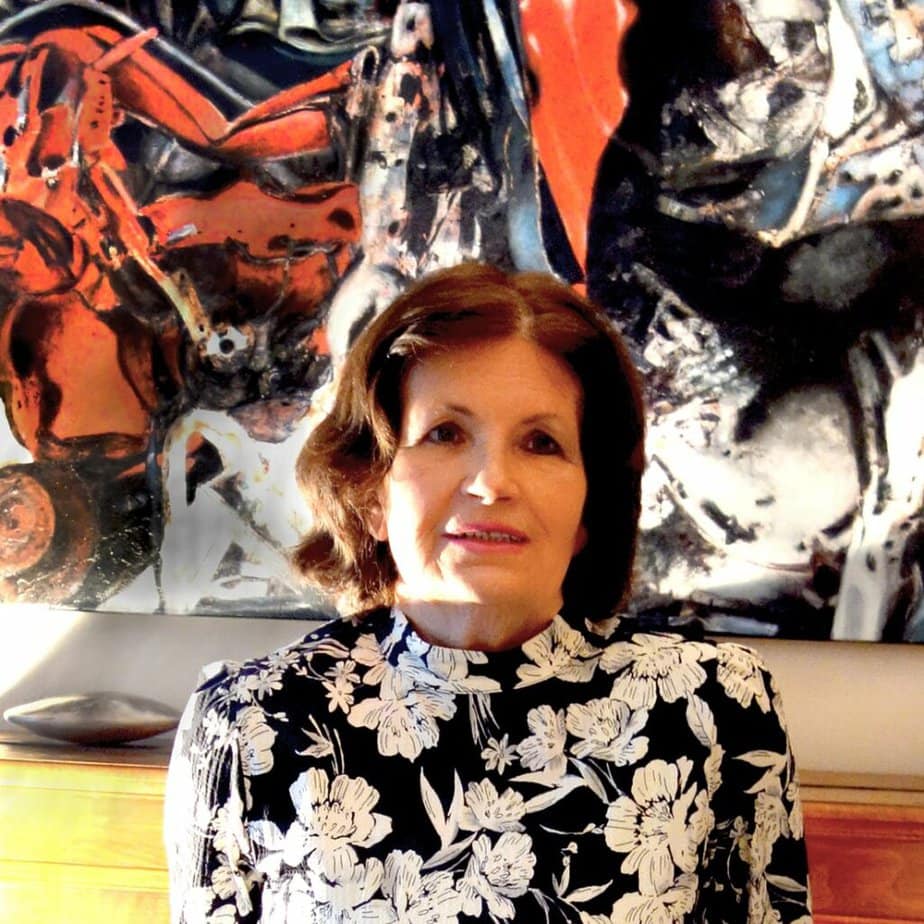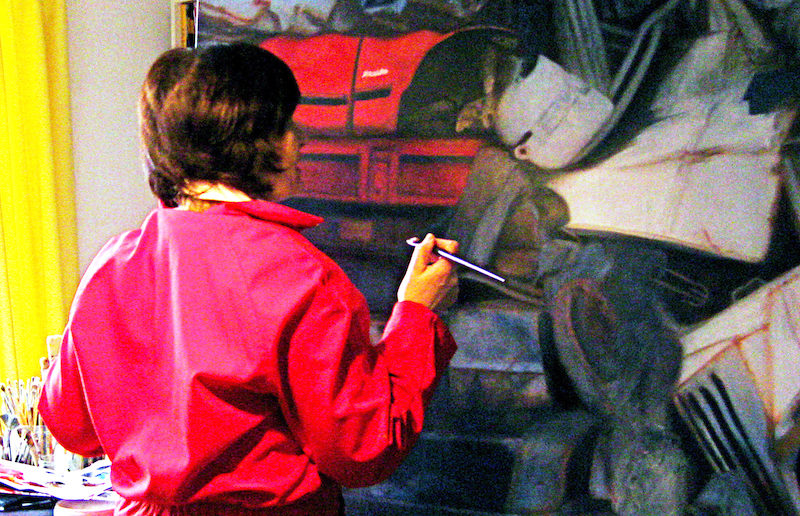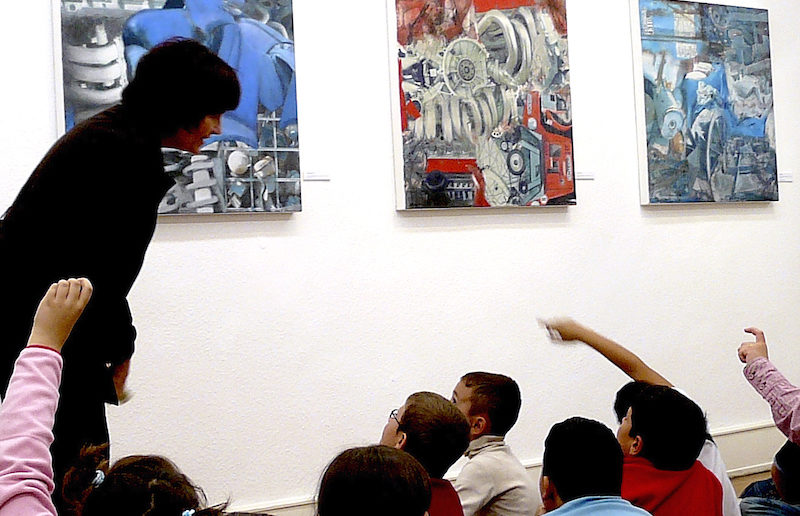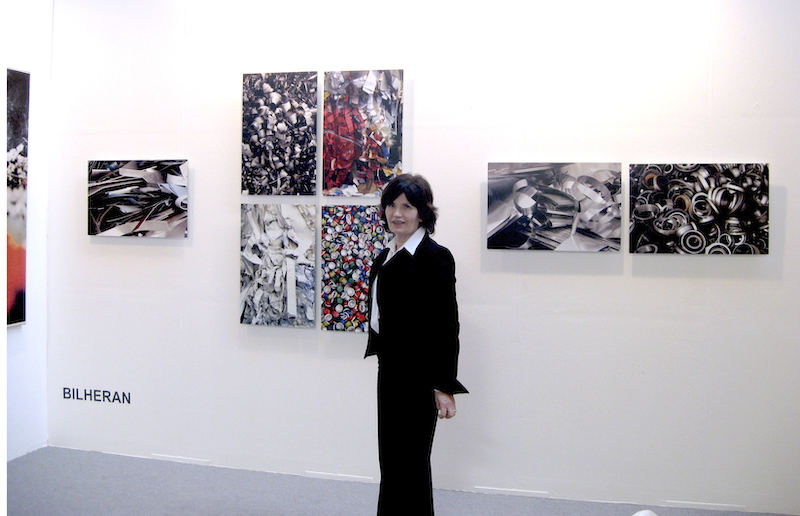
BILHERAN-GAILLARD
Plasticienne
6, avenue Nessel 68570
SOULTZMATT
mobile : +33 6 87 17 24 09
contact@bilheran-gaillard.com
www.bilheran-gaillard.com




Née en 1949 à Sainte-Foy-la-Grande en Gironde. Vit et travaille à Soultzmatt, dans le Haut-Rhin.
Elle expose à la fois des peintures, des photographies et, plus récemment, des sculptures.
La métamorphose des choses abandonnées
Dans l’œuvre de Jacqueline Bilheran Gaillard, il y a un va-et-vient de la photographie à la peinture et à la sculpture. Pas de privilège de l’un de ces médiums, pas de choix exclusif des matériaux – métal rouillé, papier, plastique, tissu, résine -, mais l’unité d’une même thématique, la poésie de l’abandon, la beauté des objets qui ont perdu leur usage familier et subi l’usure du temps et la déformation aléatoire de l’entassement, ou celle, volontaire, de l’artiste démiurge qui comprime, écrase, fond, déchire, plisse, assemble, déforme, colore, photographie, transfère, peint…
Par l’art, l’objet déchu dont on ne veut plus voir la laideur banale de rebut, est transfiguré. L’œuvre n’est pourtant qu’un assemblage de matériaux pauvres, d’objets de récupération, amas de fragments, accumulation, désordre, fouillis.
Quoi de plus prosaïque qu’un tas de détritus ? De plus éphémère aussi. Tout change à chaque instant au gré des mouvements de la benne et de la pelle mécanique qui font disparaître l’agencement provisoire sous chaque nouvelle couche de déchets : l’ordre à peine entrevu n’est déjà plus là. Il ne sera plus du tout quand le tas tout entier sera englouti dans le métal en fusion du four de l’usine de retraitement. Mais cet ordre provisoire a été. Le regard de l’artiste l’a fixé en une photographie puis sur la toile, son geste créateur a transformé certains de ces objets soustraits à la décharge en sculpture : il a élevé l’instant trivial en une chose capable de durer indéfiniment. Il y a là, comme le disait Hegel, « une sorte de raillerie et d’ironie » à l’égard de la réalité la plus prosaïque, « un miracle d’idéalité ». En imprimant une valeur durable à ce qui n’était que passager, l’art confère une autre réalité aux apparences, il les arrache à leur existence évanescente et à peine perceptible pour les idéaliser, en faire une manifestation de l’esprit. Transformer l’instant fugitif de l’apparence sensible en éternité : métamorphose.
1949 born in Sainte-Foy-la-Grande, South-West of France
Lives and works in Soultzmatt, Alsace, France
Metamorphoses of discarded things
Jacqueline Bilheran-Gaillard’s work is one of endless circulation between photography, painting and sculpture with all three art forms on an equal footing and a generous embrace of all types of materials, rusty metal, paper, plastic, textile, resin to name a few. Despite this wide range of approaches, a strong thematic unity pervades the whole project: it is the poetry of the discarded thing, the beauty of objects that have lost their familiar use and suffer the wear and tear of time and distortion, the latter coming in two kinds: that resulting from chance location on the trash pile and the intentional variety obtained in the workshop of the demiurge artist who compresses, crushes, melts, tears, creases, assembles, deforms, colours, photographs, transfers and paints.
Relying on accumulation, disorder, clutter, Bilheran-Gaillard’s work assembles “worthless” materials, recycled objects, heaps of fragments. The common ugliness of the discarded object which we want removed from our sight, its refuse quality, are then transfigured by art.
What could be more prosaic or short-lived than a garbage heap? Everything in it changes all the time. The arm of the power shovel or other crushing machinery will constantly disrupt its temporary organizations, burying them under every fresh layer of waste: hardly has the semblance of an order been glimpsed than it is no longer there. And it will be gone forever when the whole heap is gobbled up in the molten metal inside the recycling plant’s oven. But this temporary order existed. It was caught by the artist’s eye in a photograph, then went on to become a canvas; the creative gesture continued as some of the objects “picked from the dump” were turned into a sculpture. In the end, the trivial moment has been elevated through its transformation into an object whose permanence can match the infinity of time. Hegel regarded such a “miracle of ideality” as “a kind of mockery or irony” at the expense of the most prosaic reality. By stamping a long-lasting value upon what was only temporary, art endows appearances with a higher level of reality: it pulls them out of evanescent and barely perceptible existence to idealize them and make them manifestations of the spirit. Metamorphosis as the process that turns the transience of a sensory appearance into eternity is what Jacqueline Bilheran-Gaillard’s work is all about.
Traduction de Vincent Dussol